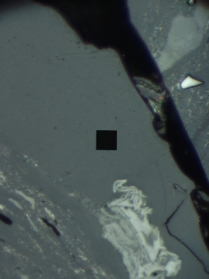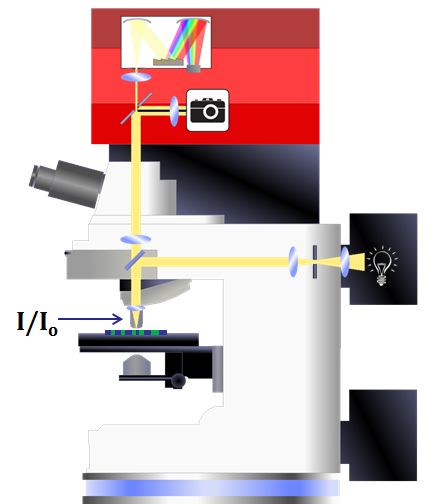Vitrinite Reflectance
Measuring the Energy Content of Coal

Coal is composed of macerals, the organic components found in coal, kerogen, and other petroleum source rocks. Macerals include vitrinite, inertinite, and liptinite. Vitrinite, one of the primary components of coal, petroleum source rocks, and sedimentary kerogens, appears shiny under a microscope and is derived from the cell-wall material or woody tissue of plants.
Vitrinite's predictable changes with heating over geological time make its reflectance levels a reliable measure of a coal sample's thermal maturity and energy potential. Consequently, methods have been developed to measure the percentage of light reflected from a coal sample to determine its thermal maturity, or rank, and its energy content.
In addition to coal, vitrinite reflectance measurements are applied to petroleum source rocks and sedimentary kerogens to gauge their thermal maturity and the types of petrochemicals they contain. Reflectance values between 0.5% and 1.3% are considered optimal for these samples, indicating the most valuable stages of petrochemical content.
By understanding and measuring vitrinite reflectance, researchers can accurately assess the quality and energy potential of coal and petroleum source rocks, making it an essential tool in the energy industry.
How to Measure Vitrinite Reflectance

The measurement of vitrinite reflectance is defined by both ISO and ASTM standards methods (as well as other national standards). ISO 7404-5 and ASTM D2798 both state that measuring the vitrinite reflectance of coal is to be done with a specially configured microscope using a calibrated photometer. The microscope is configured for incident illumination with green light where the illuminating light may be either plane-polarized or not. The reflected light intensity is measured with either a photometer, a spectrophotometer or with a digital camera fitted to the microscope.
The system is calibrated with special Vitrinite Reflectance Standards, supplied by CRAIC. The sample is then placed on the sample stage and brought into focus. Using the standard methodology, at least 100 measurements are made of the sample. This allows the user to test blends that contain coals of different ranks. From the data, the mean and standard deviation of all the readings are calculated as percent reflectance. The spread of the individual reflectance values is also plotted as a histogram. This allows the user to determine the different macerals and types of macerals in a sample. This data will give an indication of the rank of the coal sample.
For more detail on vitrinite reflectance, visit the following pages:
ISO 7404-5 Method of Determining MIcroscopically the Reflectance of Vitrinite
ASTM D2798 Standard Test Method for Microscopical Determination of the Vitrinite Reflectance of Coal 508PV™ Microscope Spectrophotometer for Vitrinite Reflectance GeoImage™ Imaging Photometer for Vitrinite Reflectance & Point Counting


